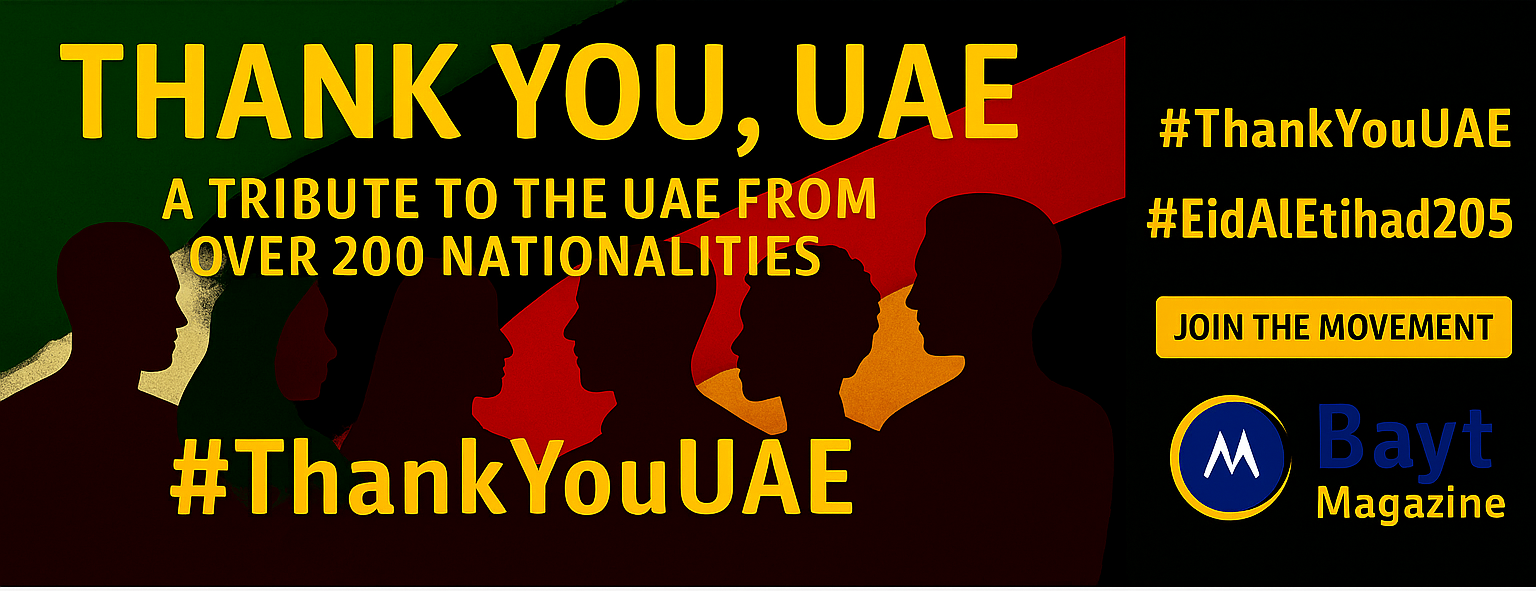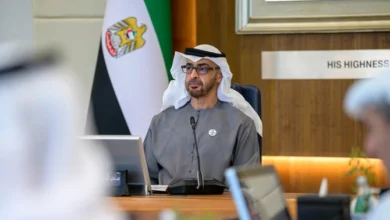
Why UAE’s CEPA Agreement Is Reshaping Global Trade
The UAE‘s CEPA agreement program stands as a driving force in global trade. The program will secure 26 mutually beneficial alliances with major international markets by Q1 2025. Five new agreements were signed in 2025 with Malaysia, New Zealand, Kenya, Ukraine, and the Central African Republic.
These detailed economic partnerships show remarkable results in the numbers. Trade with India grew by 20.5%, and exchanges with Georgia jumped by 56%. The UAE wants to increase its non-oil foreign trade to Dhs4 trillion by 2031. The UAE-India CEPA alliance alone should generate over US$100 billion in trade over the next five years.
This detailed piece looks at how these mutually beneficial alliances reshape global trade dynamics. It also explores their economic effects and how they line up with UAE’s broader economic vision for 2031.
The Evolution of UAE’s CEPA Strategy Since 2021
September 2021 marked a turning point in UAE’s economic strategy with the launch of its Complete Economic Partnership Agreement (CEPA) program. The initiative emerged as part of the ambitious ‘Projects of the 50’ national agenda. UAE wanted to build stronger international ties and establish itself as a global trade hub.
Launch of the complete economic partnership program
UAE signed its first CEPA with India on February 18, 2022, which took effect on May 1, 2022. This first agreement paved the way for rapid growth, leading to 26 agreements with key countries and international blocs by Q1 2025. The program gained momentum throughout 2025. Five new partnerships emerged with Malaysia, New Zealand, Kenya, Ukraine, and the Central African Republic. Today, six agreements are active, 14 are going through technical and ratification steps, and six more await signing after successful negotiations.
From regional focus to global trade network
The CEPA strategy started with nearby markets but grew into a worldwide initiative. Analysts point out that much of UAE’s CEPAs involve Asian countries, particularly those in the “Tier 1” category. On top of that, the program now includes partners from African and South American continents. Western nations have less representation because larger economies prefer to negotiate with the entire GCC bloc rather than individual agreements.
Key differences between CEPA and traditional FTAs
CEPAs differ from traditional Free Trade Agreements (FTAs) in several key ways. These agreements offer more value than conventional FTAs because:
- Complete scope: CEPAs go beyond simple trade agreements to cover rules for investment, competition, and public procurement
- Regulatory focus: They examine regulatory aspects of trade more thoroughly than standard FTAs
- All-encompassing approach: They cover services, investments, and other economic partnership aspects
UAE CEPAs share common benefits like tariff cuts or elimination, fewer technical trade barriers, better market access for UAE exporters, and faster investment in priority sectors. These agreements have become the life-blood of UAE’s strategy to broaden its economy and strengthen its global trade position.
How UAE’s CEPA Agreements Are Transforming Global Trade Routes

Image Source: Gulf States Newsletter
UAE’s smart use of CEPA agreements reshapes global trade routes. These agreements create new paths and strengthen the country’s role as a key hub in international trade.
Creating new East-West trade corridors
UAE’s CEPA program backs two major trade routes that change how goods flow between Asia, the Middle East, and Europe. The India-Middle East-Europe Economic Corridor (IMEC) launched at the G20 in Delhi in September 2023. This new partnership brings together the US, EU, India, Saudi Arabia, and the UAE. The corridor creates a better route than traditional sea paths that face issues like the Red Sea shipping crisis. This crisis shifted about 15% of global trade worth over AED 3.67 trillion.
Iraq’s Development Road project costs around AED 62.42bn and should finish by 2029. This project offers another path for trade. These initiatives help UAE become a vital link in new East-West trade routes.
Strengthening economic ties with emerging markets
UAE’s choice of CEPA agreement locations shows a clear plan to build stronger bonds with growing economies. Asian countries make up much of these agreements now, while African and South American nations join the list. UAE’s trade with Cambodia reached AED 1494.48m in 2022, showing 33% growth from 2021. The UAE-Cambodia CEPA wants to push this trade to AED 3.67bn by 2030.
Impact on global supply chain reconfiguration
These agreements reshape global supply chains at a crucial time. Juma Mohammed Al Kait, Assistant Undersecretary for Foreign Trade Affairs, points out that UAE’s excellent logistics and global port network create new trade routes. Advanced technology and smooth customs procedures secure these routes. CEPAs help when countries stop exporting certain goods, especially food items. This protects UAE’s food security and creates different import options for key supplies.
UAE’s smart placement of these agreements protects its economy from trade risks. It also opens new doors for global trade and changes how goods move around the world.
Economic Impact of UAE’s CEPA Agreements in 2025

Image Source: N R Doshi & Partners
UAE’s Comprehensive Economic Partnership Agreements (CEPAs) have led to record-breaking trade figures in 2024-2025. These mutually beneficial alliances deliver measurable results in economic sectors of all types.
Growth in non-oil trade volumes
UAE’s non-oil foreign trade hit AED3 trillion in 2024, with a remarkable 14.6% jump from 2023. This stands out against the global trade growth average of just 2.4%. UAE has already reached 75% of its AED4 trillion target set in the ‘We the UAE 2031‘ vision, with seven years left.
Sector-specific trade expansion statistics
The CEPA program has sparked substantial growth across sectors. Major winners include:
- Logistics, clean energy, and advanced technology sectors
- Financial services and green industries
- Agriculture and sustainable food systems
Exports to CEPA partner countries reached AED135 billion in 2024. This represents a 42.3% increase and makes up 24% of total non-oil exports. Trade with CEPA partners shows strong growth: India (20.5%), Turkey (11%), Indonesia (15%), and Georgia (56%).
Investment flow increases across partner countries
These agreements have boosted investment flows substantially. The Australia-UAE CEPA aims to triple bilateral trade by 2032, targeting USD55.08 billion in non-oil trade. UAE has invested heavily in Australian projects, with USD9.18 billion in housing and USD15.42 billion in a fertilizer plant.
Job creation and economic diversification outcomes
The CEPA program creates substantial job opportunities beyond direct trade benefits. UAE-Turkey CEPA plans to create 25,000 new jobs in both countries by 2031. These agreements propel development in UAE’s economic diversification, as non-oil exports grew 27.6% to AED561.2 billion in 2024. Exports now make up 18.7% of UAE’s total trade, up from 16.8% in 2023 and 14.1% in 2019.
UAE moves steadily toward achieving its economic vision ahead of schedule. The CEPA program serves as the life-blood of this soaring win.
Strategic Positioning Through CEPA: UAE’s Global Trade Vision

Image Source: Aarna Properties Dubai
The complete economic partnership agreement (CEPA) program is the life-blood of UAE’s economic transformation and crucial to the nation’s strategic vision for long-term prosperity. This ambitious initiative has shaped Emirates’ path toward sustained economic growth since its launch in 2021.
Alignment with UAE’s 2031 economic goals
CEPA program drives the achievement of targets outlined in the ‘We the UAE 2031’ vision. This economic roadmap wants to:
- Increase the total value of non-oil foreign trade in goods to AED 4 trillion
- Expand non-oil exports to AED 800 billion by 2031
- Boost the overall economy to over AED 2937.55 billion by 2030
The results have been remarkable. UAE’s non-oil foreign trade hit AED 3 trillion in 2024, with a 14.6% annual increase. The country has already achieved 75% of its AED 4 trillion target with seven full years left before the 2031 deadline.
Enhancing UAE’s position as a global trade hub
CEPA strategy lifts UAE from a global trade participant to a central node in international commerce. These agreements help establish Emirates as a key gateway for non-oil goods and services. UAE creates a distinct value proposition in global trade by using its strategic location between East and West.
These agreements go beyond tariff reductions to encourage investments and advance eco-friendly industries. Strategic collaborations target priority sectors like logistics, clean energy, state-of-the-art technology, financial services, green industries, agriculture, and sustainable food systems[213].
Foreign direct investment (FDI) has emerged as a vital component of the CEPA strategy. UAE provides a business-friendly environment that works perfectly with free trade zones and state-of-the-art logistics networks. These features make Emirates attractive to multinational corporations looking for strategic positions in global supply chains.
The CEPA footprint started with Asian markets but now extends to Africa and South America. Dr. Thani Al Zeyoudi, UAE’s Minister of State for Foreign Trade, has confirmed plans to expand the program throughout 2025.
UAE’s CEPA program is proof of the nation’s economic transformation and global trade leadership. The UAE has established strategic collaborations across Asia, Africa, and South America that position it as a vital connector in international commerce.
The trade numbers paint an impressive picture. Non-oil foreign trade reached AED 3 trillion in 2024, showing progress toward the AED 4 trillion target for 2031. India’s trade grew by 20.5% while Georgia saw a 56% increase. These partnerships have strengthened supply chains and created alternative trade routes that proved essential during global disruptions.
The program delivers more than just impressive numbers. UAE’s detailed approach targets sectors like clean energy, advanced technology, and green food systems that have accelerated its economic diversification. New job opportunities have emerged from these agreements. The UAE-Turkey CEPA alone aims to create 25,000 new jobs by 2031.
UAE’s CEPA strategy demonstrates how targeted economic partnerships combined with strong infrastructure and simplified processes can reshape a nation’s role in global trade. The UAE steadily progresses toward its ambitious economic vision as existing agreements mature and new partnerships develop.




